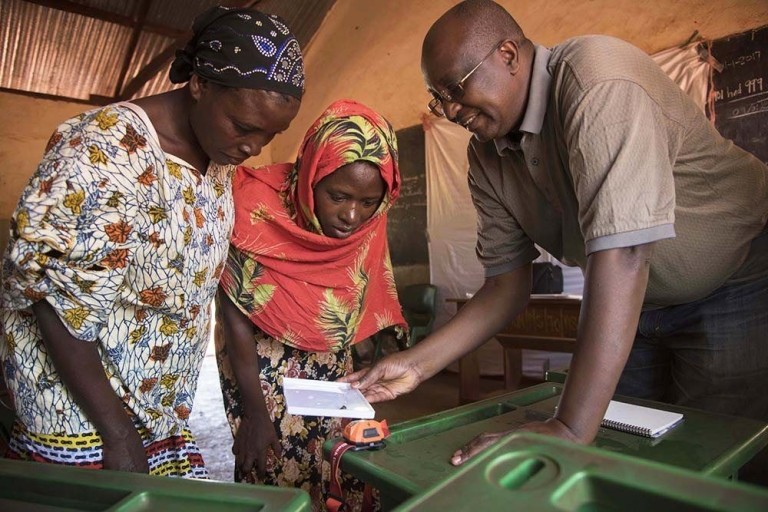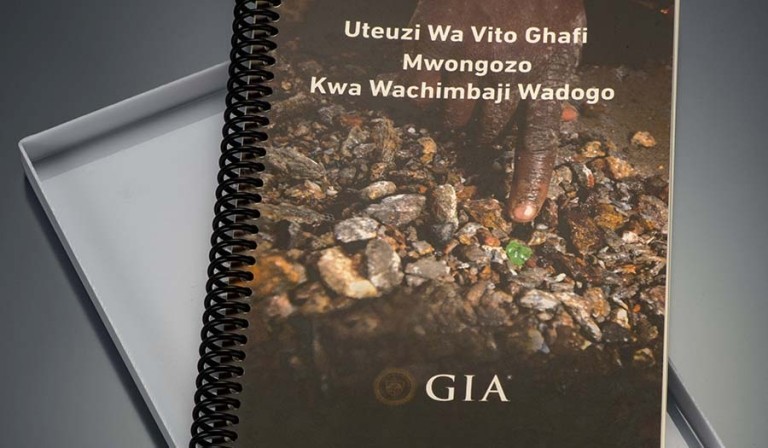Feature
For women who mine gemstones in Tanzania, knowledge is economic power

She’s been making her living as an artisanal gemstone miner for years, but no one had ever told 55-year-old Rehema Hamisi that salt diminishes gemstones’ appearance.
“Before, I was using salt, which fainted the color and you cannot see any other details,” Hamisi says.
Then she received a copy of Selecting Gem Rough: A Guide for Artisanal Miners. The illustrated booklet explained the basics of identifying, processing and valuing stones, and it came with training and hands-on mentoring from an expert gemologist – all at no cost.
“I started washing the gems using water after the training. This has helped me see materials more clearly.”
That, in turn, has helped boost Hamisi’s income.
Around the world, tens of millions of people in developing communities depend on artisanal and small-scale mining for their livelihood. Through its Mines to Markets program, Pact works to make that livelihood safer, healthier and more sustainable, efficient and lucrative.
Last year, as part of Mines to Markets, Pact launched a partnership with GIA (Gemological Institute of America) to test a new rough gem guide. Made specifically to give basic gemological and market knowledge to artisanal miners in gem-producing regions, Selecting Gem Rough was developed by a team of GIA gemology, market, education and design staff who consulted with experts who buy in rural areas.
Together, Pact and GIA identified the best location to pilot the guide, which comes in both English and Tanzanian Swahili. In January, they distributed it with training to about 50 women miners in the Tanga region, near Tanzania’s eastern border.
All costs for the pilot – about $120,000 – were paid from GIA’s endowment fund.
“There is often a huge knowledge differential between the artisanal miners who work tirelessly to produce the world's most beautiful stones, and those later down the supply chain,” explains Cristina Villegas, Pact's technical program manager for Mines to Markets. “This new tool is helping miners better understand the quality and value of their products, which will help reduce their vulnerability in the supply chain and improve their economic development opportunities.”
Says GIA’s Robert Weldon, who helped develop and test the booklet: “It was incredibly fulfilling to see how sharing GIA’s extensive gem knowledge could directly impact the daily lives of artisanal miners.”

Since the January trainings, Pact and GIA have been making site visits to monitor miners’ progress and conduct follow-up trainings and focus groups about the booklet’s usefulness.
“Overall, the women are telling us that the guide is very helpful,” says Pact’s Norbert Massay, a project manager in Tanzania. “They are putting the information to use.”
Like Hamisi, Abdalla Komba, a miner in Ngombeni village, has increased her income by changing the way she works based on what she’s learned.
She used to sell high- and low-quality gemstone to buyers together.
“Now,” Komba says, “I separate the stones and sell them per their quality.”
Kanisiana Sabini, a 50-year-old garnet miner from Kalalani, says the knowledge she’s gained has empowered her to sell her gems for better prices.
“I have sold my garnet at 70,000 Tanzanian shillings (about US$30) after the training,” Sabini says, “but before I could have sold it at a maximum of 10,000.”
Mwanahamisi Peter, another Kalalani miner, says she only wishes she’d received Selecting Gem Rough years ago, when her mine was younger and she was unearthing larger stones.
“I remember I sold a red garnet the size of my hand in 2011 at 500,000 Tanzanian shillings,” or about US$220, Peter recalls.
Now she knows better.
“This was nothing,” she says.
Lead photo: GIA's Marvin Wambua helps participants examine a gem in a translucent tray provided with the gem guide.
Photos by Robert Weldon/GIA.